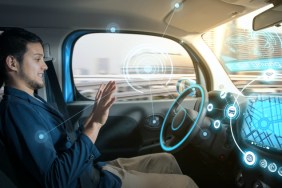The hot trend of designing and presenting cars that are more mobile computers and social media centers than just transport continued during CES 2017 with multiple automakers trotting out their most futuristic efforts. For Toyota, that glimpse into tomorrow’s automobile was is the Concept-i.
With a cloud-connected telematics system that links the internet to the car, the Concept-i employs artificial intelligence within the vehicle to evolve its systems as needed over time. The idea is to create a “friendly car” that evolves with its owner.
Also: Autolust | The Chrysler Portal Concept at CES 2017
The automative industry is now using the major U.S. auto shows in Los Angeles, Detroit, Chicago and New York to introduce its real world cars and imminent engineering improvements. The companies targeted CES 2017 and previous years’ Las Vegas shows to look beyond the next few years and suggest where the automotive industry is headed.

Concept-i is all about artificial intelligence and its ability to enhance the user experience. For Toyota, the in-house AI agent is named “Yui,” and that little imp lives in and travels around the car to interact with the driver with light, sound and touch. Yui learns driver preferences and personalities and adjusts the car and its functions or make the operator and passengers more comfortable.
While that sort of adaptive AI is on its way, Toyota’s Entune 3.0 within the Concept-i is already en route and will arrive later this years. It’ll offer additional features, functions and better connectivity.

Entune 3.0 employs a new Data Communications Modules to offer in-vehicle Wi-Fi. Toyota with Verizon. Telenav adds Scout GPS to transmit turn-by-turn directions and moving maps to the dashboard screen.
Cloud connectivity via the new Entune 3.0 operates with its own smartphone app to add remote connectivity to the car. Owners will be able to start and turn off their car, lock and unlock the doors and set limits for guest drivers so they can receive warnings for excessive vehicle speed and geographic location outside a set region.






